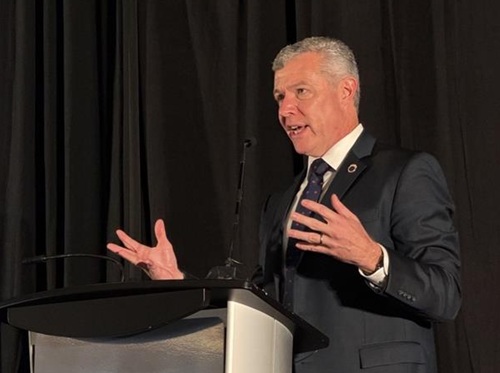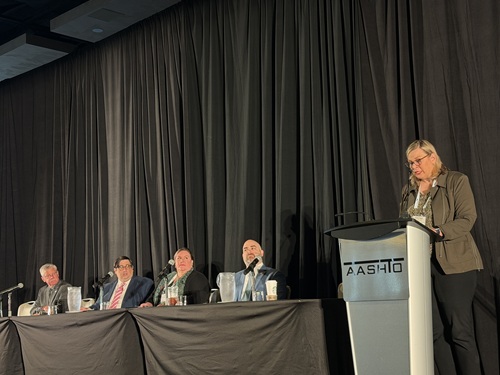The U.S. Departments of Energy, Transportation, Housing and Urban Development, and Environmental Protection Agency recently signed a memorandum of understanding or MOU to reduce greenhouse gas or GHG emissions associated with the transportation sector while concurrently ensuring “resilient and accessible mobility options” for all Americans.
[Above photo by USDOT]
The MOU commits the agencies to release within 90 days of its signing a comprehensive blueprint for decarbonizing the transportation sector that will help guide future policy decisions, as well as research, development, demonstration, and deployment in the public and private sectors.

That blueprint will also ensure a coordinated “whole-of-government” approach to address challenges to achieving widespread and equitable de-carbonization of the domestic transportation sector. This includes increasing access to safe active transportation options, providing clean and affordable transit options, modernizing the grid to meet increased demands from the electric vehicle sector, and reducing emissions from the entire lifecycle of transportation, including emissions from construction.
Domestic transportation – including both passenger and freight modes – produces more GHG emissions than any other sector, those four agencies noted in a joint statement. Thus by working together with states, local communities, tribal communities, labor unions, nonprofits, and the private sector, they hope to promote low- and zero-emission transportation solutions to reduce reliance on fossil fuels, create clean transportation jobs, and support the Biden administration’s goal of achieving net-zero emissions economy-wide by 2050.
Those four agencies said that the billions of dollars in “clean transportation” funding allocated through the $1.2 trillion Infrastructure Investment and Jobs Act enacted in November 2021 as well as the $739 billion Inflation Reduction Act enacted in August makes the United States “well-positioned” to take reduced GHGs while creating “millions of jobs” for American workers.
The agencies said they plan to accomplish both goals by increasing access to more efficient modes of transportation such as walking, biking, transit and rail, while lowering the costs of electric vehicles and other zero emission vehicles and fuels. That would allow American families and businesses to benefit from and enjoy the benefits of this “affordable clean energy revolution,” those agencies said.
 Top Stories
Top Stories
Collaboration Touted at AASHTO’s Third Safety Summit
October 31, 2025 Top Stories
Top Stories

